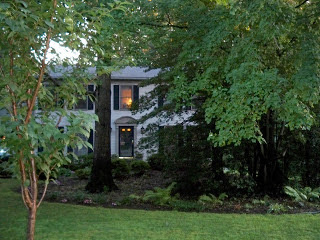The Red Oak

Who knows when the great red oak was born, when the acorn that gave it life fell to the ground, found pliable soil, sent down roots? Decades, maybe 100 years or more, when second-growth forest filled in this land that once was farmed.
I stepped into its history 33 years ago and found in its lofty shelter a stateliness and calm. It became, in fact, our signature tree, the one I think of first when I think of our house.

It had been ailing for years, a fact I noticed with the same pit in the stomach I’ve had when running my tongue over an aching molar. But the measures we took — pruning, watering, fertilizing — did not save it. The ambrosia beetle, an opportunistic insect that moves in after years of drought and other stresses, killed it in a single season.
All summer I’ve been lamenting the tree’s brittle boughs, its withered foliage. I’ve been dreading the moment that finally came.
Now the red oak is felled, its great trunk piled around the yard, so much lumber. Soon the logs will be carted away, too.
It’s not the greatest loss I’ve ever sustained … but it’s a loss, just the same.
